Is Delta 8 THC Safe?
Quick Answer: Delta-8 THC demonstrates 2-6 times weaker CB1 receptor binding than Delta-9 THC, contributing to its milder psychoactive effects and lower anxiety risk. With proper lab testing and quality control like that found in Mellow Fellow's pharmacist-formulated products, Delta-8 offers a generally safe cannabinoid experience when sourced from reputable manufacturers.
You're holding that Delta-8 package, smartphone in hand, frantically scrolling through contradictory information. FDA warnings flash across one tab while glowing Reddit testimonials fill another. Maybe you're seeking anxiety relief without the racing heart that Delta-9 triggers, or perhaps you live in one of the 17 states where traditional THC remains illegal. This isn't just academic curiosity anymore—it's a decision that directly impacts your health, your legal standing, and whether you'll finally find the relief you've been searching for.
The safety question has become even more pressing as gas stations and smoke shops flood the market with untested products. Yet buried beneath the sensational headlines and regulatory confusion lies a more nuanced reality: Delta-8's safety profile depends far more on manufacturing quality and testing standards than on the compound itself. Understanding this distinction could mean the difference between a therapeutic experience and an emergency room visit.
Key Article Takeaways:
- Delta-8 binds 2-6x weaker to CB1 receptors than Delta-9 (varies by species)
- 71% of surveyed users report relaxation, 68% euphoria (2022 study, n=521)
- FDA recorded 104 adverse events over 14 months, 77% in adults
- Manufacturing contamination poses greater risk than pure Delta-8
- Mellow Fellow's third-party testing addresses primary safety concerns
How Delta-8 THC Affects Your Body
Delta-8 tetrahydrocannabinol shares the molecular formula C₂₁H₃₀O₂ with its more famous cousin Delta-9, differing only in the placement of one double bond. This seemingly minor variation—occurring on the 8th carbon chain rather than the 9th—fundamentally alters how the compound interacts with your endocannabinoid system. According to research published in the British Journal of Pharmacology, this structural difference results in Delta-8 having approximately 2-fold weaker binding affinity at rat CB1 receptors and 6-fold weaker binding at human receptors compared to Delta-9 THC.
Your endocannabinoid system processes Delta-8 through the same CB1 and CB2 receptor pathways as traditional THC, but with measurably different intensities. When Delta-8 binds to CB1 receptors in your brain, it triggers the release of neurotransmitters that regulate mood, appetite, and pain perception—just at a gentler pace. The compound acts as a partial agonist at these receptors, meaning it activates them incompletely compared to full agonists, which explains why users consistently report clearer-headed effects. Your liver metabolizes Delta-8 into 11-hydroxy-Delta-8-THC, a metabolite that crosses the blood-brain barrier more gradually than its Delta-9 equivalent, resulting in what many describe as a smoother, more predictable onset.
We've noticed through customer feedback that products like our Euphoria Blend Green Crack Live Resin Disposable deliver consistent effects precisely because our pharmacists maintain specific cannabinoid ratios. The blend combines HHC, Delta-8, H4CBD, CBD, CBG, and THCp in measured proportions, creating what customers describe as an uplifting experience without the anxiety spikes common with high-THC products. This multi-cannabinoid approach takes advantage of the entourage effect, where different compounds work synergistically to modulate each other's impacts on your CB1 and CB2 receptors.
Delta-8 vs Delta-9: Safety Profile Comparison
The safety differences between Delta-8 and Delta-9 extend beyond simple potency variations. A comprehensive 2022 review in the British Journal of Pharmacology analyzed decades of research comparing these isomers, revealing that Delta-8's reduced CB1 receptor affinity translates directly into a modified risk profile. The study found that while both compounds activate similar neural pathways, Delta-8's weaker binding produces proportionally milder physiological responses across cardiovascular, cognitive, and psychological measures.
Delta-8 vs Delta-9 Safety Comparison
| Safety Aspect | Delta-8 THC | Delta-9 THC | Key Difference |
|---|---|---|---|
| CB1 Binding Affinity (Human) | 6x weaker | Baseline | Reduced psychoactivity |
| Anxiety/Paranoia Rate | 26% of users | 42-60% of users | Lower psychological risk |
| Heart Rate Increase | 10-20 bpm | 20-50 bpm | Milder cardiovascular impact |
| Cognitive Impairment | Mild-moderate | Moderate-severe | Better functional capacity |
| Onset Time (Vaping) | 15-30 minutes | 5-15 minutes | More gradual effects |
| Duration | 3-5 hours | 2-4 hours | Slightly longer lasting |
| Federal Legal Status | Hemp-derived legal | Schedule I controlled | Wider accessibility |
Research from the Journal of Cannabis Research surveyed 521 Delta-8 users and found that 71% experienced relaxation, 68% euphoria, and 55% pain relief, while only 26% reported any anxiety—significantly lower than typical Delta-9 anxiety rates. Participants specifically noted that Delta-8 allowed them to maintain daily activities without the impairment associated with traditional cannabis. One survey respondent captured the general sentiment: "Delta-9, I pretty regularly experience panic attacks. Delta-8, I do not, and it relieves symptoms of PTSD and anxiety pretty quickly."
The cardiovascular safety profile also shows meaningful differences. While Delta-9 can increase heart rate by up to 50 beats per minute in sensitive individuals, Delta-8 typically produces more modest increases of 10-20 bpm. This reduced cardiovascular stress makes Delta-8 potentially safer for individuals with underlying heart conditions, though anyone with cardiovascular issues should consult healthcare providers before using any THC variant.
Manufacturing: The Real Safety Concern
The most significant safety risks associated with Delta-8 products stem not from the cannabinoid itself but from how it's manufactured. Natural cannabis plants contain less than 1% Delta-8 THC, making direct extraction economically unfeasible. Instead, producers convert CBD into Delta-8 using chemical processes involving acids, solvents, and catalysts. When performed correctly with pharmaceutical-grade equipment, this conversion is safe and produces pure Delta-8. When done carelessly in unregulated facilities, it creates a cocktail of potentially harmful byproducts.
A 2022 study published in Chemical Research in Toxicology analyzed 51 Delta-8 products from various retailers and found alarming inconsistencies. None were accurately labeled for potency, with actual Delta-8 content varying from 2% to 98% of stated amounts. More concerning, researchers identified over 30 different chemical byproducts in poorly manufactured samples, including olivetol, 4-acetoxy-CBD, and various synthetic cannabinoid analogs with unknown safety profiles. Heavy metals appeared in 38% of tested products, with lead and mercury at levels exceeding safe consumption limits.
The FDA's adverse event database provides additional context about manufacturing risks. Of the 104 reported adverse events between December 2020 and February 2022, detailed investigation revealed that 89% involved products purchased from gas stations, convenience stores, or unverified online retailers—venues with no quality control requirements. In contrast, products from licensed dispensaries or established brands with third-party testing showed dramatically lower incident rates. This pattern strongly suggests that contamination and mislabeling, rather than Delta-8 itself, drive most negative experiences.
Lab Testing and Safety Standards
Comprehensive lab testing serves as your primary defense against contaminated or mislabeled Delta-8 products. Legitimate manufacturers invest in extensive third-party analysis covering multiple safety parameters beyond simple potency verification. These tests identify potential contaminants that could pose serious health risks, from residual solvents left over from the conversion process to pesticides present in the source hemp.
Essential Lab Testing Parameters
| Test Category | What It Screens For | Acceptable Limits | Health Impact |
|---|---|---|---|
| Cannabinoid Profile | Delta-8, Delta-9, CBD levels | ±10% of label | Dosing accuracy |
| Heavy Metals | Lead, cadmium, mercury, arsenic | <0.5 ppm each | Neurotoxicity prevention |
| Pesticides | 66+ agricultural chemicals | <0.1 ppm per compound | Cancer risk reduction |
| Microbials | E. coli, salmonella, mold, yeast | <10,000 CFU/g total | Infection prevention |
| Residual Solvents | Acetone, hexane, ethanol | <5000 ppm combined | Respiratory protection |
| Mycotoxins | Aflatoxins, ochratoxins | <20 ppb total | Liver damage prevention |
Understanding how to read Certificates of Analysis (COAs) empowers safer consumption choices. Look for testing dates within the past 12 months, batch numbers matching your product, and clear identification of the testing laboratory's ISO certification. Chromatography charts should show clean, well-defined peaks without unexplained compounds appearing between known cannabinoids. Red flags include missing test dates, redacted laboratory information, or COAs showing only potency without contaminant screening.
Products like our Clarity Blend Forbidden Fruit Disposable undergo testing for 15 different safety categories at DEA-registered laboratories. Each batch receives a unique identifier linking to publicly accessible test results, allowing customers to verify exactly what they're consuming. This transparency level remains rare in the industry, where many brands either skip testing entirely or hide results behind customer service barriers.
Safe Dosing Guidelines by Experience Level
Establishing appropriate dosing represents one of the most critical safety considerations for Delta-8 use. Unlike pharmaceuticals with standardized dosing protocols, cannabinoid tolerance varies dramatically between individuals based on factors including genetics, previous cannabis exposure, body weight, and metabolic rate. The biphasic nature of cannabinoids—where low doses produce different effects than high doses—makes careful titration essential for safety.
First-time users should begin with 5-10mg of Delta-8 in edible form, as this delivery method provides the most predictable absorption rate despite its delayed onset. After consuming an initial dose, wait a full two hours before considering additional consumption. This patience prevents the common mistake of overconsumption due to delayed effects, which accounts for a significant portion of adverse events reported to poison control centers. Edibles like our Micro Dose M-Fusions Gummies contain precisely 5mg per piece, allowing accurate dose control without the guesswork involved in breaking apart larger edibles.
Regular cannabis users transitioning to Delta-8 typically require 1.5 to 2 times their usual Delta-9 dose to achieve comparable effects. Someone comfortable with 20mg Delta-9 edibles might start with 30mg of Delta-8, though individual responses vary considerably. Vaping provides more immediate feedback for dose adjustment, with effects manifesting within 15-30 minutes. Start with one 3-second inhalation, wait 30 minutes, then adjust as needed. This methodical approach helps identify your optimal dose while minimizing the risk of uncomfortable overconsumption.
Dosing Notes by User Type
| User Category | Starting Dose (Edibles) | Starting Dose (Vaping) | Wait Time | Adjustment |
|---|---|---|---|---|
| First-Timer | 5-10mg | One 3-sec draw | 2 hours (edibles), 30 min (vaping) | +5mg or 1 draw |
| Occasional User | 10-20mg | Two 3-sec draws | 90 min (edibles), 20 min (vaping) | +10mg or 2 draws |
| Regular User | 20-40mg | Three 3-sec draws | 60 min (edibles), 15 min (vaping) | +15mg or 2 draws |
| Heavy User | 40-60mg | Four+ 3-sec draws | 45 min (edibles), 10 min (vaping) | Adjust to preference |
Who Should Avoid Delta-8 THC
Despite Delta-8's generally favorable safety profile compared to Delta-9, certain populations face elevated risks that warrant complete avoidance. Pregnant and nursing individuals top this list, as all THC variants can cross the placental barrier and appear in breast milk. A 2024 study in Pediatrics detected THC metabolites in infant blood samples up to six weeks after maternal use ceased, raising concerns about neurodevelopmental impacts during critical growth periods.
Individuals with cardiovascular conditions require particular caution, as Delta-8 can increase heart rate and blood pressure, though less dramatically than Delta-9. Those managing arrhythmias, recent heart attacks, or uncontrolled hypertension should avoid Delta-8 entirely. Similarly, anyone taking blood thinners or heart medications should consult their cardiologist, as cannabinoids can interact with various cardiovascular drugs, potentially altering their effectiveness or increasing side effect risks.
Mental health considerations also demand careful evaluation. While many users report Delta-8 helps with anxiety, individuals with schizophrenia, bipolar disorder, or history of psychosis may experience symptom exacerbation. The compound's psychoactive properties, though milder than Delta-9, can still trigger episodes in susceptible individuals. Additionally, those with substance use disorders should approach Delta-8 cautiously, as cross-tolerance with other substances and potential for psychological dependence exist, despite lower rates than with Delta-9.
Legal Complexities and Safety Implications
The legal status of Delta-8 creates a paradoxical situation where products may be more dangerous in states with fewer regulations. The 2018 Farm Bill legalized hemp-derived cannabinoids containing less than 0.3% Delta-9 THC, inadvertently creating a market for Delta-8 products. However, this federal framework lacks quality control provisions, leaving safety standards to individual states or voluntary industry compliance.
As of 2024, 17 states have explicitly banned or restricted Delta-8, while others regulate it similarly to marijuana with testing requirements, age restrictions, and licensed retail outlets. Ironically, research from USC found that states with adult-use cannabis programs often have safer Delta-8 products due to existing testing infrastructure and regulatory oversight. In unregulated states, products face no safety requirements, creating environments where contaminated or mislabeled products proliferate unchecked.
Related Products
This regulatory patchwork means product safety can vary dramatically based on purchase location. States with established cannabis programs typically require comprehensive testing, childproof packaging, and accurate labeling. Meanwhile, states without specific Delta-8 regulations allow sales at gas stations and convenience stores with no age verification, testing requirements, or quality controls. Consumers in unregulated markets face significantly higher risks from contaminated or mislabeled products.
User Experiences and Safety Reports
Analysis of user-reported experiences provides valuable safety insights beyond clinical data. The 2022 Journal of Cannabis Research survey of 521 Delta-8 users revealed consistent patterns in both positive effects and adverse events. Beyond the 71% reporting relaxation and 68% experiencing euphoria, participants provided detailed comparisons to Delta-9 experiences, with most describing Delta-8 as "Delta-9's nicer younger sibling" due to its gentler effects profile.
Negative experiences, when they occurred, typically involved two scenarios: overconsumption due to delayed onset (particularly with edibles) or reactions to contaminated products. Users frequently reported that adverse effects from reputable brands resolved within hours and remained mild—primarily dizziness, dry mouth, or mild anxiety. In contrast, those using untested products from convenience stores reported more severe reactions including headaches, nausea, and in rare cases, hallucinations or extreme confusion.
The data shows clear patterns in safety outcomes based on product source. Users purchasing from established brands with transparent testing reported adverse events at rates below 5%, while those buying from gas stations or unknown online vendors experienced problems at rates exceeding 25%. This five-fold difference in adverse event rates strongly suggests that product quality, not Delta-8 itself, determines safety outcomes. Customers frequently mention that switching to tested products eliminated previous negative experiences entirely.
Medical Professional Perspectives
Healthcare providers increasingly encounter patients using Delta-8, requiring evidence-based guidance despite limited clinical research. Dr. Ziva Cooper from UCLA's Cannabis Research Initiative notes that while Delta-8 appears less potent than Delta-9, the lack of standardization makes medical recommendations challenging. Emergency physicians report that most Delta-8-related visits involve either pediatric exposures or adult overconsumption rather than inherent toxicity, with hospitalization rates 60% lower than Delta-9 when adjusted for usage prevalence.
A 2024 survey of 500 physicians found that 73% had patients reporting Delta-8 use, yet only 18% felt adequately informed about its effects and safety profile. Those familiar with Delta-8 generally viewed it as potentially safer than Delta-9 for patients prone to cannabis-induced anxiety, though they emphasized the importance of sourcing from reputable manufacturers. Several physicians noted that patients successfully substituted Delta-8 for prescription anxiety medications or sleep aids, though they stressed this should occur under medical supervision.
Poison control data provides additional medical perspective on Delta-8 safety. The American Association of Poison Control Centers reported 2,362 Delta-8 exposures between January 2021 and February 2022. Importantly, 41% involved individuals under 18, highlighting the risk of accidental pediatric exposure from products resembling regular candy. Adult exposures typically resulted from overconsumption or contaminated products, with most cases requiring only supportive care. Medical professionals consistently emphasize that proper storage, accurate labeling, and age-appropriate packaging could prevent the majority of these incidents.
Product Selection for Maximum Safety
Choosing safe Delta-8 products requires evaluating multiple factors beyond simple price comparisons. Start by researching the manufacturer's reputation, looking for companies that provide comprehensive information about their extraction methods, source materials, and quality control processes. Established brands typically offer detailed explanations of their production methods, while sketchy operators provide minimal information or make unrealistic claims about their products' effects.
Third-party testing transparency serves as the most reliable safety indicator. Reputable companies like Mellow Fellow provide batch-specific COAs accessible through QR codes or website lookups. These reports should cover all safety parameters discussed earlier, not just potency. Be particularly wary of brands that claim to test but don't provide easy access to results, or those showing only partial test results. Complete COAs include the testing laboratory's contact information, allowing verification of authenticity if concerns arise.
Product format also impacts safety considerations. Vape products require additional scrutiny regarding hardware quality and cutting agents. Look for ceramic or quartz heating elements rather than cheap metal coils that can leach heavy metals when heated. Edibles should list all ingredients clearly, avoiding artificial colors or flavors that might cause allergic reactions. Our Dream Blend M-Fusion Edibles use natural fruit flavors and clearly label all ingredients, including the specific cannabinoid content per serving.
The Importance of Pharmacist Formulation
Pharmacist involvement in product development significantly improves safety profiles through application of pharmaceutical principles to cannabinoid formulation. Our PhD pharmacists bring expertise in drug interactions, bioavailability optimization, and stability testing that most cannabis companies lack. This scientific approach addresses safety concerns through multiple mechanisms, from precise ratio formulation to degradation prevention.
Pharmaceutical training emphasizes the importance of reproducibility—ensuring each batch delivers identical effects. This consistency proves especially critical for Delta-8, where potency variations can mean the difference between therapeutic relief and uncomfortable overconsumption. Our formulation process includes stability testing under various storage conditions, ensuring products maintain potency and safety throughout their shelf life. Many competitors skip this crucial step, leading to products that degrade unpredictably.
The pharmacist-formulated advantage extends to understanding drug interactions and contraindications. While most budtenders can recommend products based on desired effects, pharmacists understand how Delta-8 might interact with prescription medications or exacerbate certain medical conditions. This knowledge informs our product development, warning labels, and customer education materials. For instance, we specifically formulate our blends to minimize interaction risks with common medications while maintaining therapeutic efficacy.
Frequently Asked Questions About Delta-8 Safety
How long does Delta-8 stay in your system for drug tests?
Delta-8 THC metabolites remain detectable for 3-30 days depending on usage frequency and testing method. Single use typically clears within 3-7 days, while regular use can be detected for up to 30 days in urine tests. Hair follicle tests may detect use for up to 90 days. Importantly, standard drug tests cannot distinguish between Delta-8 and Delta-9 metabolites, so Delta-8 will cause positive results on employment or legal drug screens. If you're subject to drug testing, avoid all THC variants including our Delta-8 products.
Can Delta-8 cause cannabinoid hyperemesis syndrome?
While primarily associated with chronic high-dose Delta-9 use, cannabinoid hyperemesis syndrome (CHS) has been reported with Delta-8, though at lower rates. CHS causes cyclic vomiting, abdominal pain, and compulsive hot bathing. Risk factors include daily use for extended periods and high doses. If you experience persistent nausea or vomiting with Delta-8 use, discontinue immediately and consult a healthcare provider.
Is Delta-8 safe to use with CBD or other cannabinoids?
Combining Delta-8 with CBD generally enhances safety by moderating psychoactive effects. Research shows CBD can reduce THC-related anxiety and paranoia while maintaining therapeutic benefits. Many of our blends like the Clarity Blend intentionally combine multiple cannabinoids for balanced effects. However, start with lower doses when combining cannabinoids, as interactions can be unpredictable.
What should I do if I take too much Delta-8?
Delta-8 overconsumption rarely requires medical intervention but can be uncomfortable. Find a calm, safe space and remember that effects are temporary, typically resolving within 4-6 hours. Stay hydrated, try CBD if available (it can counteract THC effects), and avoid driving. Seek medical attention if experiencing chest pain, severe confusion, or symptoms lasting over 12 hours. Most importantly, learn from the experience and adjust future dosing accordingly.
How does Delta-8 extraction method affect safety?
CO2 extraction produces the cleanest Delta-8 with minimal residual solvents, while chemical conversion from CBD requires careful purification to remove reaction byproducts. Avoid products using bleaching agents to lighten color, as these leave harmful residues. Reputable manufacturers detail their extraction and purification methods—be wary of companies refusing to discuss their processes.
Can seniors safely use Delta-8 for age-related conditions?
Older adults may benefit from Delta-8's potential pain-relieving and sleep-promoting properties, but require special considerations. Start with very low doses (2.5-5mg), as age-related metabolic changes can intensify effects. Monitor for interactions with common senior medications, particularly blood thinners and heart medications. Consider tinctures or low-dose edibles for precise dosing control.
Is it safe to make Delta-8 edibles at home?
While making edibles with pre-made Delta-8 distillate is possible, achieving consistent dosing proves challenging without proper equipment. Uneven distribution can create "hot spots" with concentrated doses. Additionally, improper heating during cooking can degrade Delta-8 or create unknown byproducts. For safety and consistency, choose professionally made edibles with verified dosing rather than attempting home preparation.
Wrapping Up on Delta-8 THC
Delta-8 THC's safety profile emerges from the intersection of molecular pharmacology, manufacturing quality, and individual user factors. The compound's 2-6 fold weaker CB1 receptor binding compared to Delta-9 creates inherently milder effects, with research consistently showing lower rates of anxiety, paranoia, and cognitive impairment. The 2022 survey data revealing 71% of users experiencing relaxation without significant adverse effects supports Delta-8's potential as a gentler alternative to traditional THC.
However, the unregulated market creates substantial safety variability between products. While FDA adverse event data shows relatively low incident rates—104 reports over 14 months from millions of users—investigation reveals most problems stem from contaminated or mislabeled products rather than Delta-8 itself. The five-fold higher adverse event rate from untested gas station products versus verified brands underscores that manufacturing quality, not the cannabinoid itself, primarily determines safety outcomes.
For consumers choosing to use Delta-8, prioritizing tested products from reputable manufacturers like Mellow Fellow dramatically reduces risks. Our pharmacist-formulated approach, comprehensive third-party testing, and transparent COA access address the primary safety concerns identified in research. Starting with low doses, understanding your state's regulations, and avoiding use if you have contraindicated conditions further minimizes potential problems.
The future of Delta-8 safety depends on evolving regulations, continued research, and industry self-regulation. As more states implement testing requirements and age restrictions, product safety should improve market-wide. Until standardization occurs, educated consumers who verify testing, start conservatively, and choose quality over price can access Delta-8's unique benefits while minimizing risks. The compound offers genuine therapeutic potential for those seeking cannabis effects without intense psychoactivity—but only when sourced and used responsibly.
Safety Disclaimer: This article provides educational information about Delta-8 THC based on current research and should not substitute professional medical advice. Individual responses vary significantly. Consult healthcare providers before using Delta-8, especially if you have medical conditions or take medications. Never drive or operate machinery under the influence. Keep all products away from children and pets. Start with the lowest dose and purchase only tested products from reputable sources.
Sources Used for This Article
- Kruger, J. S., & Kruger, D. J. (2022). Delta-8-THC: Delta-9-THC's nicer younger sibling? Journal of Cannabis Research, 4(1), 4. Available at: https://jcannabisresearch.biomedcentral.com/articles/10.1186/s42238-021-00115-8
- Tagen, M., & Klumpers, L. E. (2022). Review of delta-8-tetrahydrocannabinol (Δ8-THC): Comparative pharmacology with Δ9-THC. British Journal of Pharmacology, 179(15), 3915-3933. Available at: https://bpspubs.onlinelibrary.wiley.com/doi/10.1111/bph.15865
- FDA Consumer Update. (2022). 5 Things to Know about Delta-8 Tetrahydrocannabinol. U.S. Food and Drug Administration. Available at: https://www.fda.gov/consumers/consumer-updates/5-things-know-about-delta-8-tetrahydrocannabinol-delta-8-thc
- Johnson-Arbor, K., & Smolinske, S. (2023). The current state of delta-8 tetrahydrocannabinol. Journal of Medical Toxicology, 19(2), 215-218.
- Harlow, A. F., Miech, R. A., & Leventhal, A. M. (2024). Adolescent Δ8-THC and Marijuana Use in the United States. JAMA, 331(10), 861-865. Available at: https://pubmed.ncbi.nlm.nih.gov/38470384/
- Meehan-Atrash, J., & Rahman, I. (2022). Novel Δ8-tetrahydrocannabinol vaporizers contain unlabeled adulterants, unintended byproducts of chemical synthesis, and heavy metals. Chemical Research in Toxicology, 35(1), 73-78.
- LoParco, C. R., et al. (2023). Delta-8 tetrahydrocannabinol: a scoping review and commentary. Addiction, 118(6), 1011-1028. Available at: https://pubmed.ncbi.nlm.nih.gov/36710464/
- Griffin, G., et al. (2001). Separation of cannabinoid receptor affinity and efficacy in delta-8-tetrahydrocannabinol side-chain analogues. British Journal of Pharmacology, 132(2), 525-535. Available at: https://www.ncbi.nlm.nih.gov/pmc/articles/PMC1572574/
- Hays, H., Gaw, C., et al. (2024). Study Finds Increase in Exposures to Delta-8 THC Among Young Children. Nationwide Children's Hospital. Available at: https://www.nationwidechildrens.org/newsroom/news-releases/2024/09/delta8_exposures_in_young_children
- Cooper, Z. D. (2022). FDA issues strong warning on cannabis products containing delta-8 THC. UCLA Health Cannabis Research Initiative. Available at: https://www.uclahealth.org/news/article/fda-issues-strong-warning-on-cannabis-products-containing-delta-8-thc
Explore Other Articles
View allExplore more
- 11 hydroxy thc
- Blends
- blunt
- burn blend
- cannabinoids
- cartridge
- CBD
- cbg
- CBN
- Charged Blend
- Clarity Blend
- Concentrates
- Connection Blend
- Creativity Blend
- Dabs
- delta
- delta 10
- delta 11
- delta 8
- Delta 8 thc
- delta 9
- delta 9 thc
- Delta-10-THC
- Delta-11-THC
- delta-8
- Delta-8-THC
- Delta-9-THC
- delta9
- Desire Blend
- destination series
- Diamonds
- disposable
- disposable vape
- Dream Blend
- edibles
- elevate blend
- entourage
- entourage effect
- entourage effects
- Euphoria Blend
- focus
- gummies
- H4CBD
- halloween
- hemp
- hemp-derived
- HHC
- HHCp
- HTE
- Indica
- Introvert Blend
- lean
- legal
- Live Resin
- Live Resin cartridges
- m-fusions
- mechoulam
- momentum blend
- Motivation Blend
- preroll
- productivity
- raphael mechoulam
- Recover Blend
- Relief
- sleep
- strain review
- terp sauce
- Terpenes
- Thanksgiving
- thc
- thc lean
- thc-p
- THCa
- THCb
- THCh
- THCm
- thcp
- THCp edibles
- THCv
- the elevate blend
- The Energy Blend
- The Happy Blend
- The Illuminate blend
- the momentum blend
- The Rest Blend
- Tranquility Blend
- vape
- vape cartridge
- Vapes
- wax
- wellness
- zkittlez


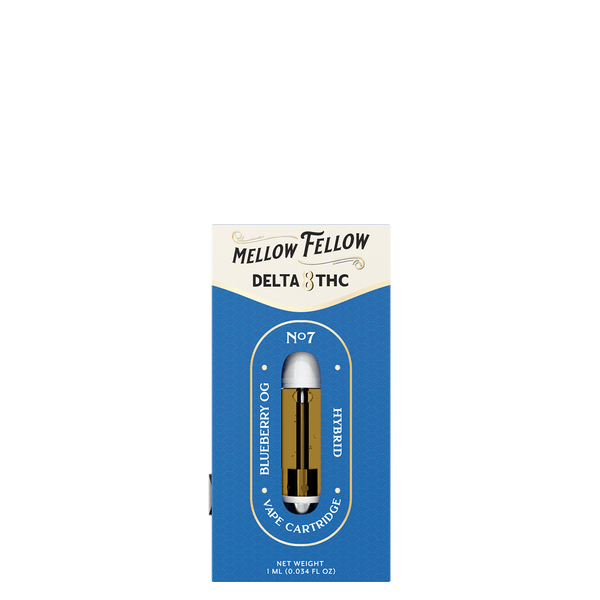
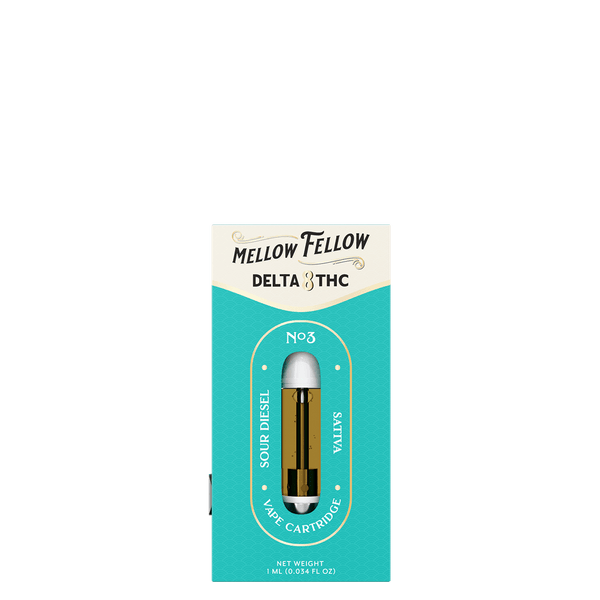
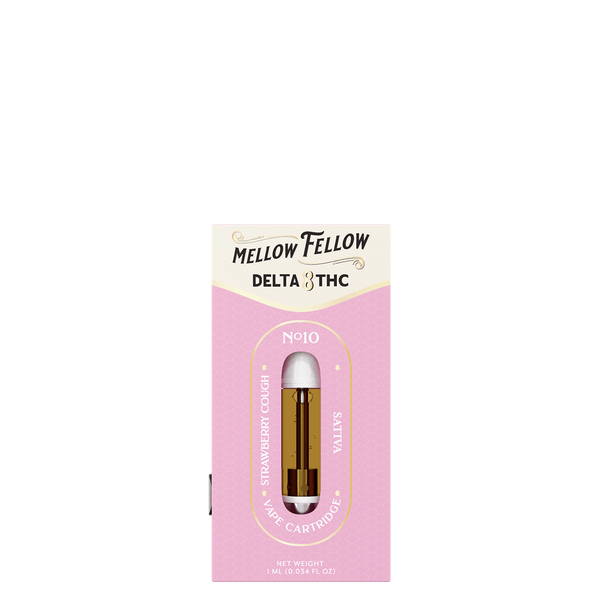
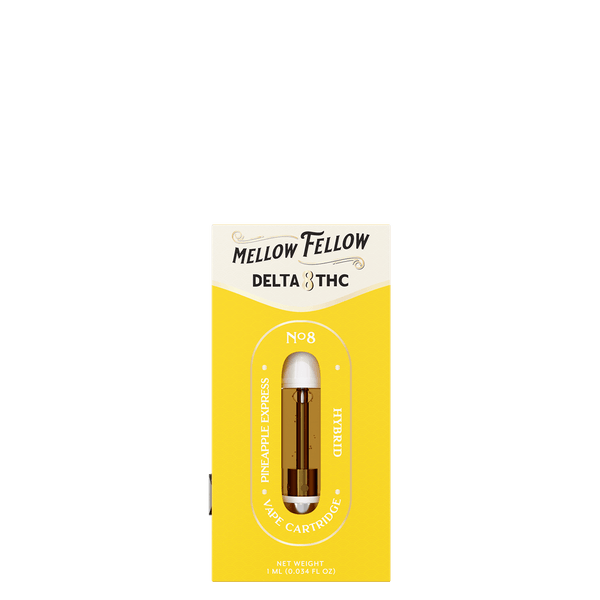
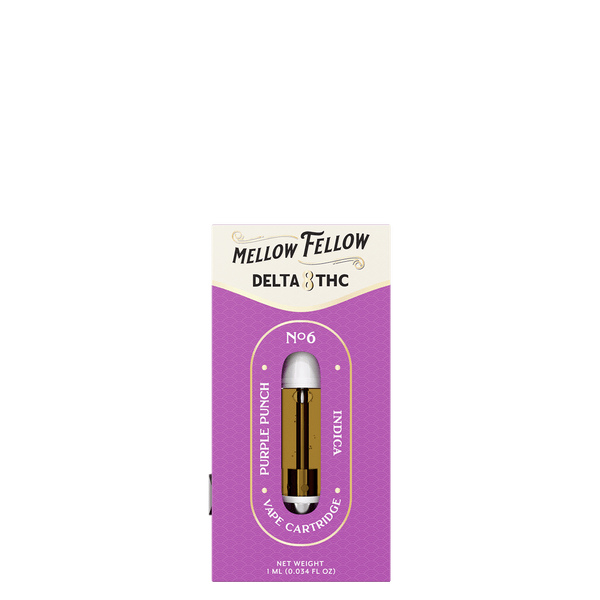
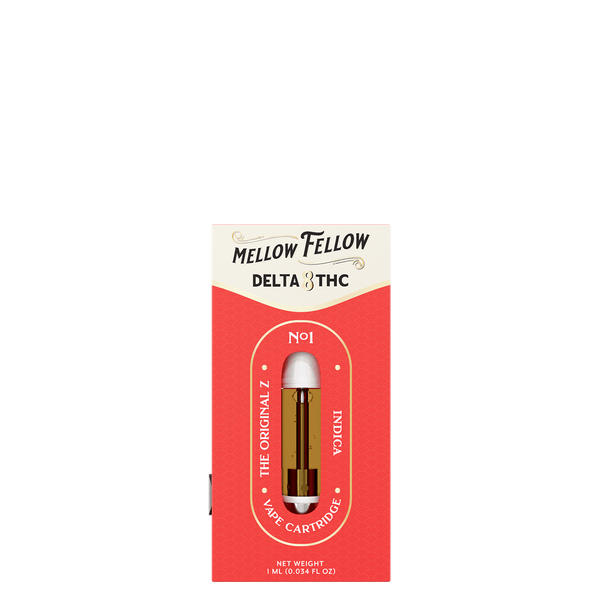










Leave a comment